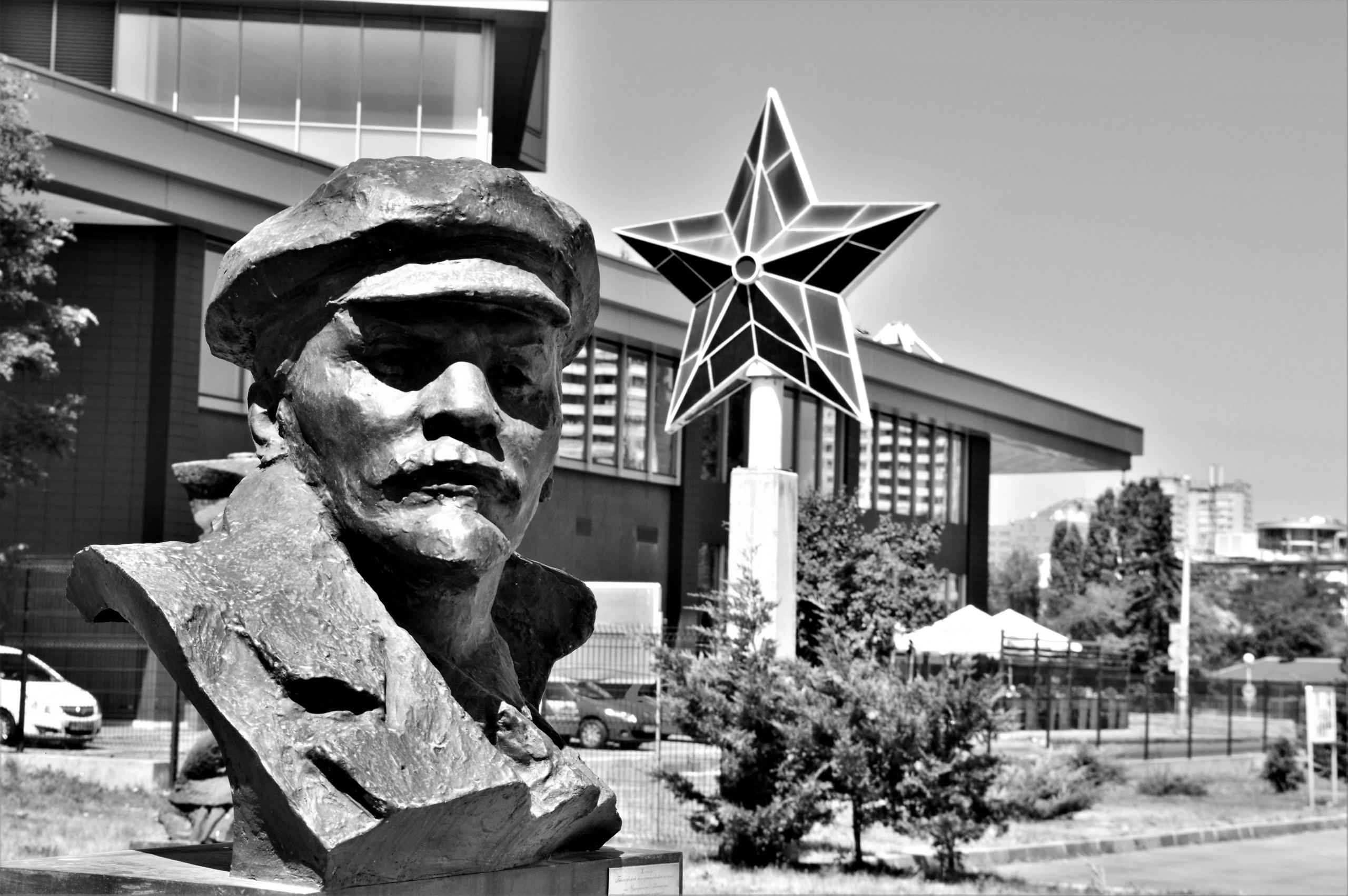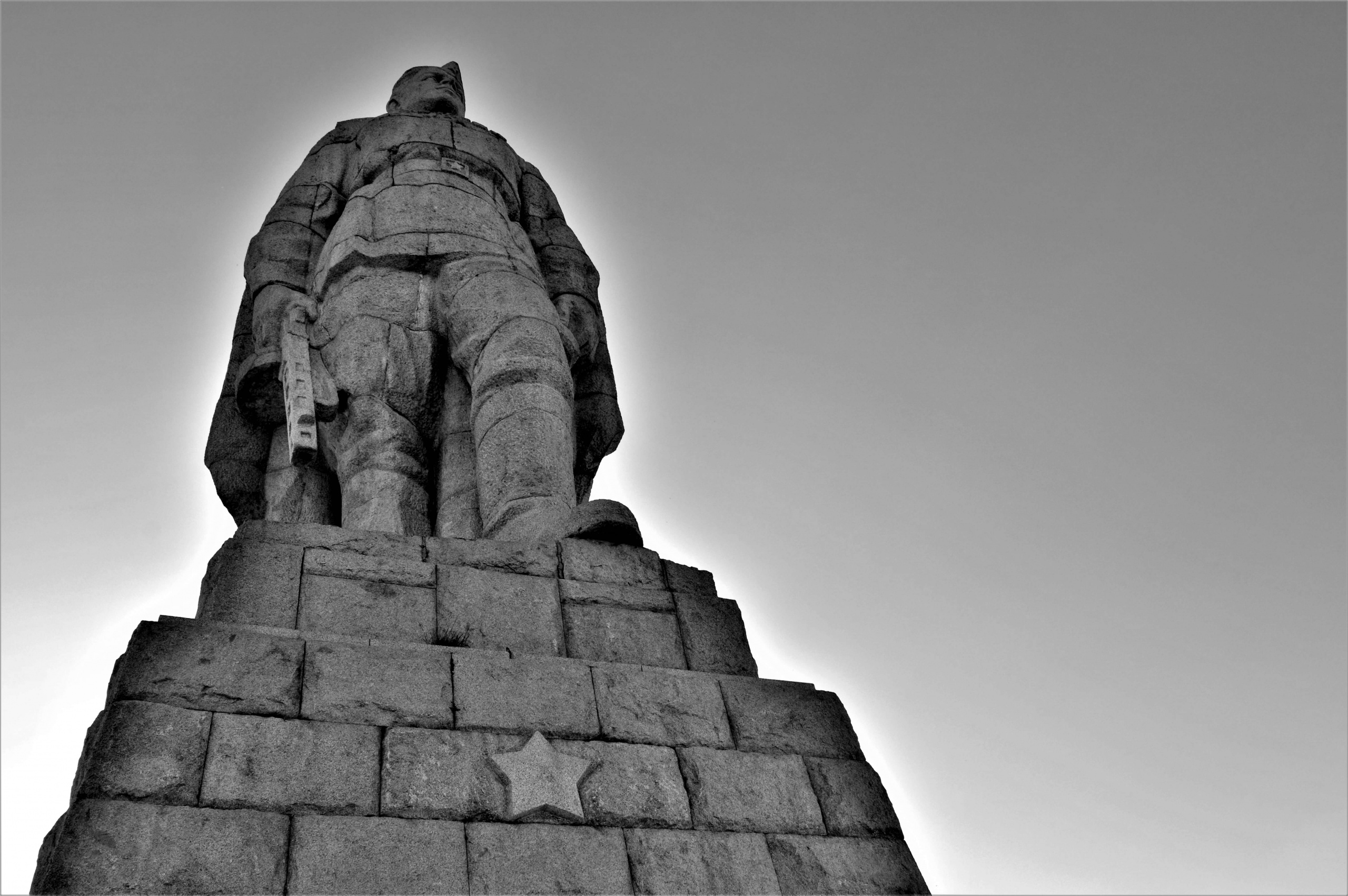Brutal as Usual? Bulgaria’s communist heritage and national postmemory5 min read
The fall of the Berlin Wall not only anticipated the demise of Communism as a political symbol in the former Eastern Bloc and beyond, but it also meant for millions of citizens the loss of the reference points around which their identity and everyday life had been organised since the end of the Second World War.
As we speak, many are still struggling with de-legitimising cultural bearings and visions reaching from the past. National identities are being currently forged within Belarus, Ukraine and South Caucasian republics. The protests against Lukashenka’s de facto Soviet administration, the ongoing crisis in Ukraine and the Nagorno-Karabakh knot, all show how the impact of Communism is still unraveling.
Since 1989, Bulgarians have begun to navigate between the desire to catch up with the imagined Western everyday normalcy and those pictorial stereotypes of backwardness and orientalism ascribed to them. They debated Bulgaria’s endless geopolitical dilemma of positioning in Europe’s East or West. Accordingly, the identity of Bulgarians was difficult to redefine for its locals and foreigners alike. While the latter have always found extremely fascinating how profoundly Communism marked the everyday life of the country, the former appeared to ignore such phenomenon.
More than thirty years after the collapse of Todor Zhivkov’s regime, it is almost impossible to ignore the best examples of Soviet-like brutalist architecture and places of remembrance of Communist time. The ufo-like Buzludzha monument, standing geographically in the middle of the country, built to glorify Communist values, is currently getting a facelift after sparking controversies amongst Bulgarians and having been left to crumble.
Both the giant skeleton and nearby ruins, which are currently about under restoration, shine light on the vast number of statues, mural plates and plaques remembering figures, partisans and intellectuals of Communism that Bulgaria continues to host. Despite the controversial past they refer to, they however evoke myths and figures of Bulgaria patriotism as well as heroism of partisans and womanhood in which traditional stories, national literature and history are embedded. Perhaps for this reason, they do not seem disturbing, at least on a surface level, to the wider public. They rather project the scholarly and much-debated national/international nexus that Communism failed to break down.
In Bulgaria, the Communist heritage resembles a rather dilemmatic yet important continuum along which Communism seems to have passed-by unnoticed. Bulgaria’s ethnically defined nationalism and folklore initially subjugated to the internationalism-façade rhetoric, though later, from the 1970s, proudly promoted at home and abroad by Lydmila Zhevkova, daughter of the party boss Todor Zhivkov.
The Sofia-based Museum of Socialist Art, exhibiting a few of the most important pieces of Communist memorabilia and paraphernalia that mushroomed around the capital in the Communist era, is rather isolated and distant from downtown. Yet, the symbolic monument to the Soviet Army remains prominent, visible from the Aleksander Nevskii Cathedral and the Parliament, located squarely in front of the Sofia University St. Kliment Ohridski. Tens of teenagers and youngsters hang out on a daily basis, perhaps ignoring the surroundings they use for skating and listening to music.
Many others still occupy public spaces, inconspicuously forming the panorama, almost unnoticed symbols of the past, hidden in plain sight. They paradoxically evoke the demise of communism, when Todor Zhivkov was on trial, but no witch-hunts or violent demonstrations occurred to impede former Communist elites recycling themselves, prior to returning to power. Many Bulgarians remember the thousands of people filling the streets with blue flags, the main symbol of democratic values and ideals. Others, more critically, point out how almost the same number of people took the streets to attend Zhivkov’s public funeral in 1998.
In general, Bulgaria’s communist heritage does not only question whether the price for the lack of post-Communist lustration is still unpaid. After all, thousands of Bulgarians are protesting for the resignation of the current government chaired by Boyko Borisov, former bodyguard of Todor Zhivkov. It also questions whether at some level of social reality, below the stucco façade of post-communist surface, at a deeper personal level, people’s adherence to communist values and habits have survived, hiding untouched in the last thirty years. The question on whether or not a certain Communist mentality has survived, is definitely worth asking in spite of the undeniable institutional reforms and developments.
To what extent unnoticed public figures and Soviet-like architecture elaborate the portrait of Bulgarian society? Alternatively, what kind of representation does the visual records of statues, street plates and places transmit to Bulgarians?
It seems that Communism’s heritage is still deeply imbued despite the passage of time. From 1989 onward, it does not only embody the public space by tracing the passage from Communism to democracy. Nor does it simply tell the stories of the places they depict to both local and foreign visitors. Rather, they highlight the contrasts when scholars as well as historians and ordinary people analyse and think about the social, cultural and political attitudes of post-Communist societies akin to Bulgaria’s. Beyond their simple appearance, overlooked or knowingly ignored, lies the thought-provoking opportunity to critically appraise the (un)surprising similarity between people’s attitudes encountered under communism and those still present in contemporary, democratic Bulgaria.
This small collection of photos does not depict the ruins of a regime on the verge of collapse. Rather, it seems to visually question the past along with its representation – whose history is continuously asked to be rewritten from different angles and accounts. At grassroots level, it may challenge people’s ideas and perceptions about the past. Digging into today’s nostalgia and dystopia of many Bulgarians, trapped between amnesia and cognitive dissonance, these pictures lay the ground for exploring how Bulgarians look today at the communist society they lived in. After experiencing the post-1989 traumatic transition and getting closer and closer to full-fledged mechanisms of liberal democracy, have they changed their mind about the West? Do they still consider that communist society simply backward or underdeveloped, aspiring to become modern without any success? Conversely, while seeking to become modern, are their expectations matched with the ways they imagined the Western normalcy? After embarking ideological and institutional elements of modernity by default, have their lives become better than they were, or, perhaps, as it was before, brutal as usual?
















